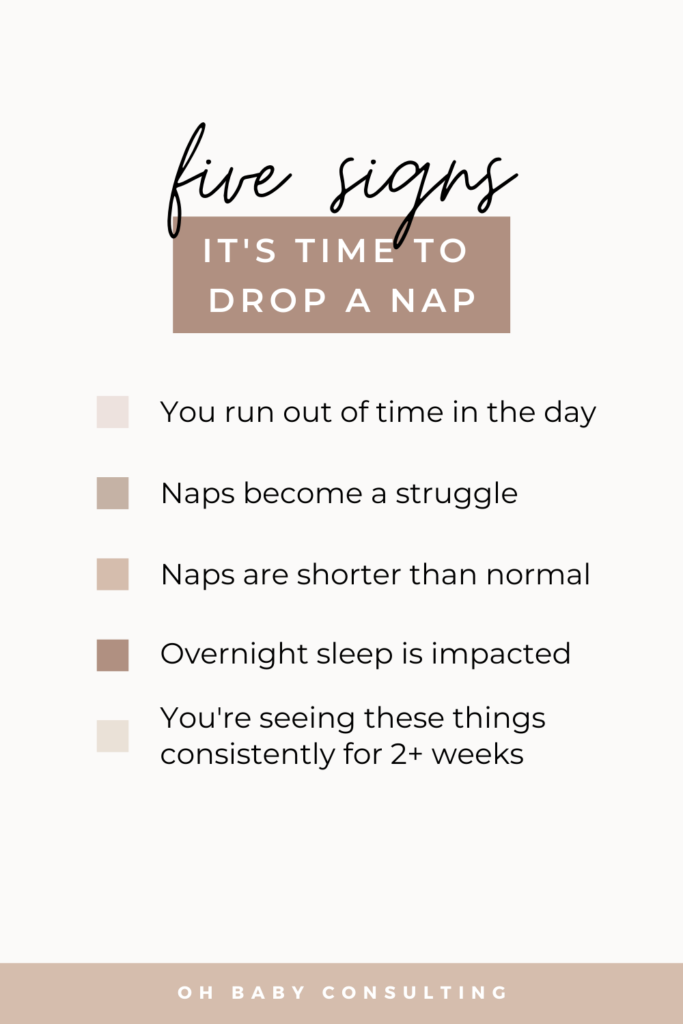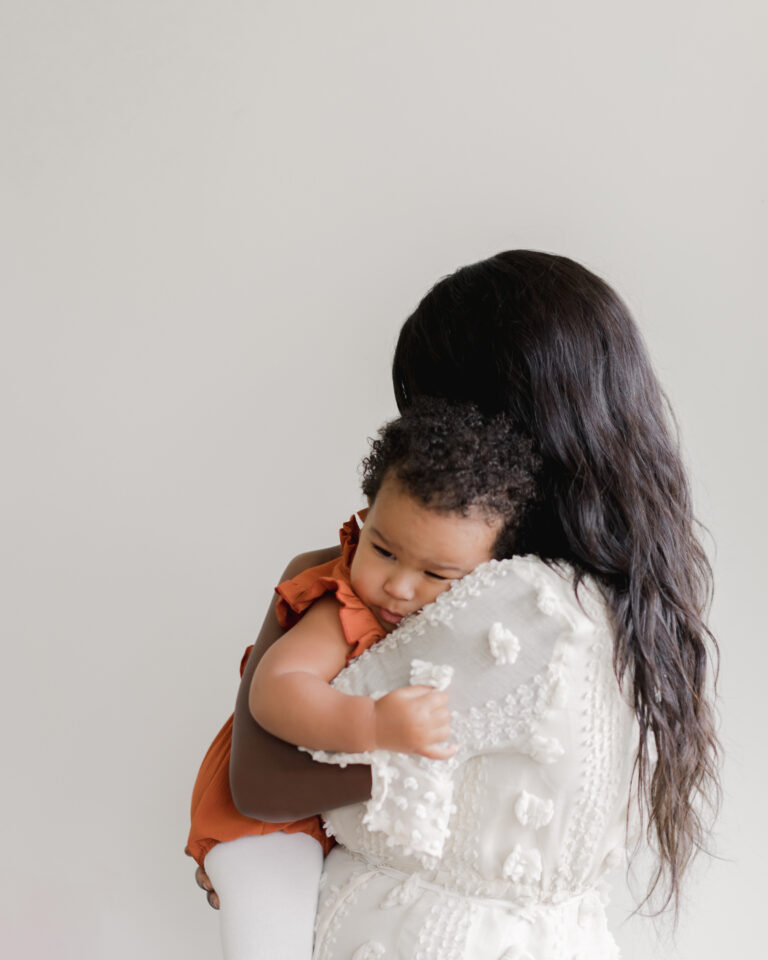Over the first 12-18 months of your baby’s life, it’s going to feel like the minute you find your groove, everything changes!
This is especially the case with sleep. As your child grows, their stamina is going to improve, and they are going to require less daytime sleep. You’ll go from a newborn who needs 6-8 hours of total sleep per day to a 10-month-old who only needs 2-3 hours (often in the blink of an eye!)
This decrease in total daytime sleep needs results in fewer naps throughout the day with longer periods of awake time in between.
Typically, nap transitions happen within the following age ranges:
- 4 > 3 naps: 3-5 months
- 3 > 2 naps: 6-8 months
- 2 > 1 nap: 13-18 months
- 1 > 0 naps: 3-4 years
Keep in mind, that the above ranges are just averages. But aside from age, there are also many signs to look out for when deciding whether or not your child is ready to transition to one fewer nap.
For most nap transitions, general indicators of readiness are the same, and knowing them ahead of time can go a long way in reducing your anxiety around your baby’s constantly changing sleep needs.
Here are some things to keep an eye out for:
You’ve run out of time in the day
Oftentimes, the transition from 4 naps to 3 and from 3 naps to 2 happens rather organically when your baby’s nap lengths start to increase. As this happens, there becomes less time during the day to fit in that final nap and still have an appropriately early bedtime. Sure, you can shift bedtime a bit later to start, but eventually, you’ll need to drop that last nap to keep bedtime between 7-8 p.m. and give your child enough time awake to fall asleep easily.
Nap time becomes a struggle (when it previously was not)
If your usually compliant baby is suddenly taking over 15-20 minutes to fall asleep at nap time (either happily or not) or completely refusing a nap (frequently the last one of the day), this could be a sign that they are ready to drop a nap. This protest stems from an increase in their stamina and a tolerance for more time awake. If you suspect this to be the case, keep your child up a bit longer between naps and see whether that has any impact on the ease in which they go down.
Your child is stuck in a cycle of perpetually short naps
If you put your child down for a nap before they’ve had enough time to build up enough sleep pressure, the result can be an annoyingly short nap. This phenomenon also occurs due to an increase in stamina during awake times. If your child has historically been able to link 2-3 sleep cycles together during a nap and is now waking after 1, a schedule adjustment is likely needed.
Bedtime protests, crib parties, and early mornings start to occur
With too much daytime sleep, children will naturally want to make up for some of that missed awake time either when they’re supposed to be falling asleep at bedtime, in the middle of the night, or in the early morning hours. Assuming your child is not overtired, a nap transition may be the solution to nighttime woes.
You’ve been seeing the above signs 4-5 days per week for at least 2 weeks
Before making any schedule changes, you want to make sure your child is actually ready. Having an off day or two doesn’t necessarily warrant a jump to fewer naps. However, if nap protests, night wake-ups, and early mornings have become “a thing,” and if your child is within or near a nap transition window, it might be time to drop a nap.
Daytime sleep is hard! That’s why I wrote the Nap Guide full of schedules, transitions, and daytime sleep tips and tricks from birth all the way through when your little one stops napping. With my guidance and support at your fingertips, you’ll never have to worry about nap logistics again!














